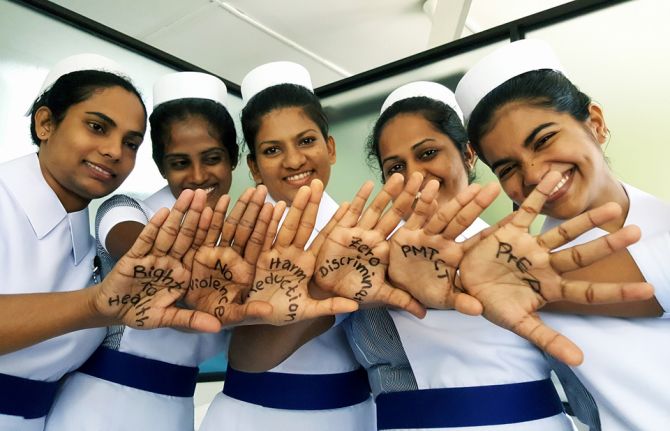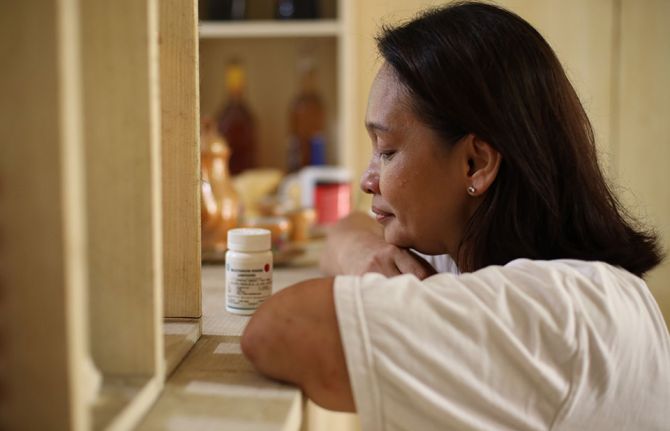

Feature Story
Hands up for #HIVprevention mobilizes support worldwide
05 December 2016
05 December 2016 05 December 2016It started in October with a single message written on one person’s hand: “know your status”. Nine weeks on and thousands of people from all over the world have demonstrated their support for UNAIDS’ “Hands up for #HIVprevention” campaign by sharing photos and videos expressing what HIV prevention means to them. Through a range of content, the campaign highlighted different aspects of HIV prevention week by week and showed how they relate to different groups of people, including adolescent girls and young women, key populations and people living with HIV.
The campaign reached more than 2 million people on Facebook and 64 000 people have engaged through likes, shares and comments. On Twitter, the campaign reached almost 3 million people and UNAIDS campaign tweets were retweeted 12 000 times and liked 9500 times.
Messages that people wrote on their hands and held up for the world to see as part of the campaign include “Use condoms always”, “Provide support”, “End stigma”, “Invest”, “PrEP”, “No violence” and “Gender equality.”
Prominent contributors included the First Lady of Benin, Claudine Talon, the First Lady of China, Peng Liyuan, the First Lady of Guinea-Bissau, Hadja Djene Kaba Condé, the First Lady of Panama, Lorena Castillo de Varella, and Tobeka Madiba Zuma, First Lady of South Africa.
UNAIDS International Goodwill Ambassador Michael Ballack also supported the campaign, with a message in support of zero discrimination. He was joined by James Chau, UNAIDS Goodwill Ambassador for China, Vera Brezhneva, UNAIDS Goodwill Ambassador for Eastern Europe and Central Asia, and Alejandra Oraa, UNAIDS Regional Goodwill Ambassador for Latin America and the Caribbean. The young television star Jenna Ortega provided a powerful and personal message about why HIV prevention was important to her. Princess Tessy of Luxembourg, UNAIDS Global Advocate for Young Women and Adolescent Girls, joined the campaign in the week highlighting women’s empowerment.
UNAIDS partners such as the United Nations Educational, Scientific and Cultural Organization, the United Nations Office on Drugs and Crime, the Global Fund to Fight AIDS, Tuberculosis and Malaria, the President’s Emergency Fund for AIDS relief and mothers2mothers also joined in, offering powerful content and testimonies from people all over the world that showed how innovative programmes are reaching the people most in need of HIV prevention methods.
The campaign followed the launch of the UNAIDS Prevention gap report earlier this year, which showed that an estimated 1.9 million adults have become infected with HIV every year for the past five years and that the number of new HIV infections is rising in some regions. The report shows that HIV prevention efforts must be reinvigorated if the world is to stay on the Fast-Track to ending the AIDS epidemic by 2030.
The campaign culminated in a call for increased investment in HIV prevention strategies targeted at the people and places most in need of them. The commitment made in the 2016 Political Declaration on Ending AIDS is to ensure that financial resources for HIV prevention are adequate and constitute no less than a quarter of AIDS spending globally.
The World AIDS Day Facebook page remains open for new contributions. UNAIDS thanks everyone who has already participated.
Get the message out: AIDS is not over, but it can be.



